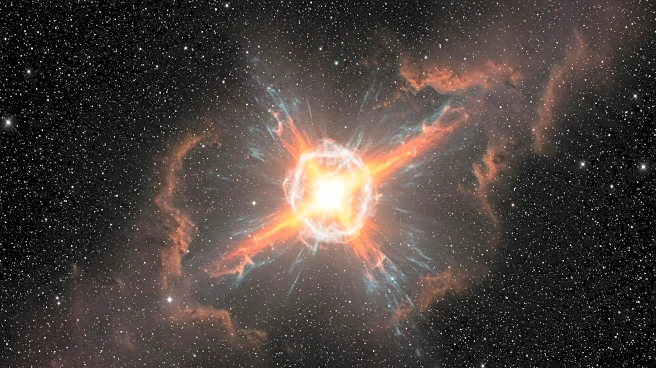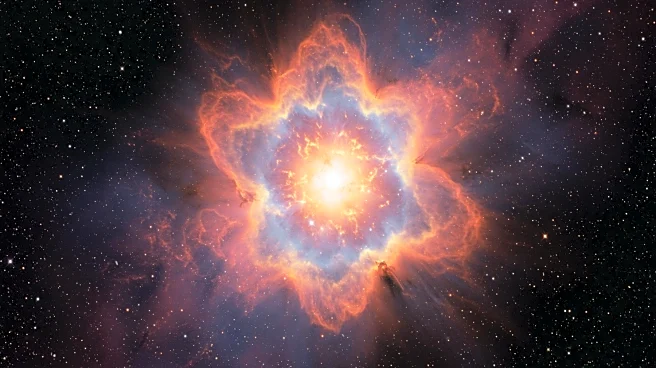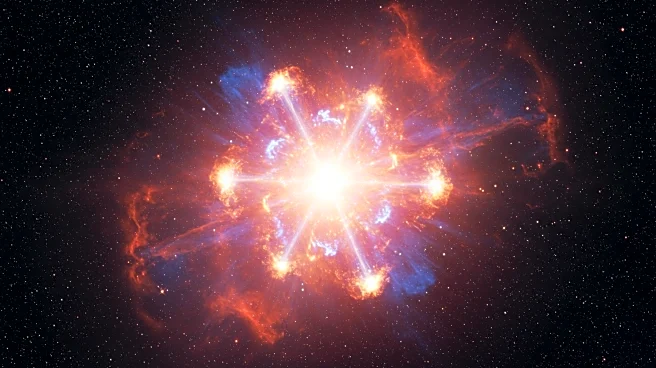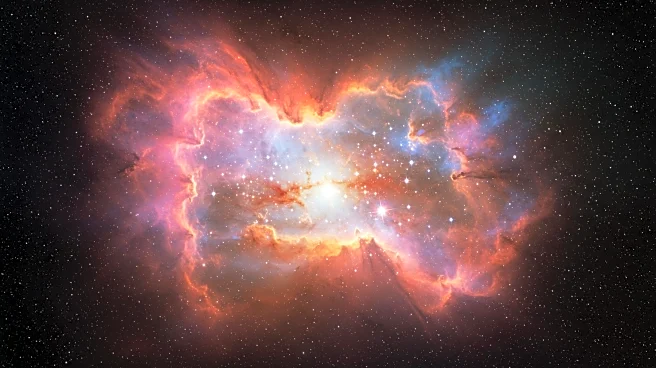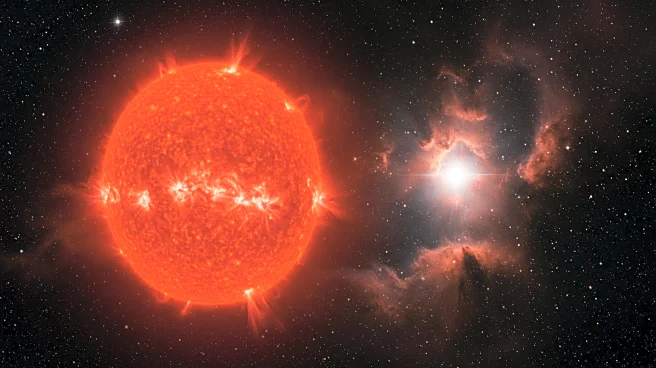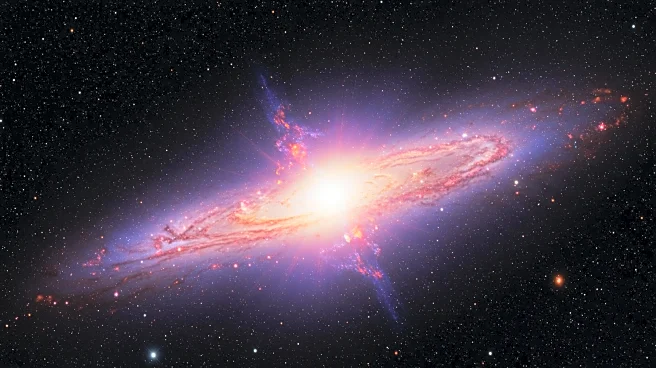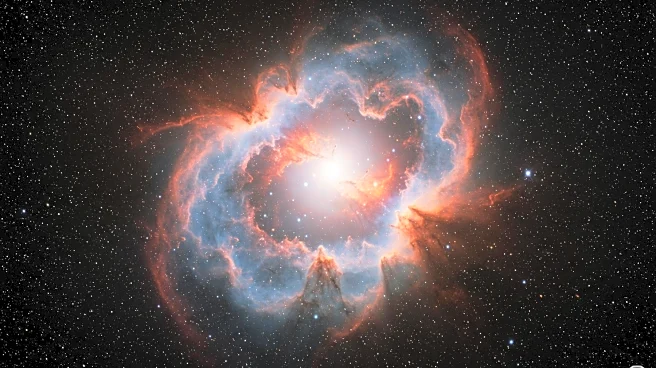What is the story about?
What's Happening?
Astronomers have identified a new type of supernova, designated SN2021yfj, located 2.2 billion light-years from Earth. This supernova is unique because the progenitor star was stripped of its outer layers, exposing inner silicon and sulfur-rich layers before exploding. The discovery provides a rare glimpse into the interior of a star prior to its supernova explosion, challenging existing models of stellar life and death. The supernova was first spotted in September 2021 by the Zwicky Transient Facility, and subsequent observations revealed a chemical signature dominated by heavier elements like silicon, sulfur, and argon.
Why It's Important?
The discovery of SN2021yfj offers new insights into the structure and evolution of massive stars, suggesting that stars can lose significant amounts of material before exploding. This challenges existing theories and models, indicating that there may be more exotic pathways for stars to end their lives. Understanding the processes that lead to such extreme supernovae can help astronomers refine their models of stellar evolution and improve predictions about the behavior of massive stars. The findings also highlight the importance of spectroscopy in uncovering the chemical signatures of supernovae, providing valuable data for future research.
What's Next?
Researchers plan to continue studying SN2021yfj to understand the mechanisms behind its unique characteristics. Possible scenarios include pre-supernova eruptions, strong stellar winds, or interactions with a companion star. The team aims to uncover more examples of such rare supernovae to better understand their nature and formation. Further observations and analysis will focus on refining models of stellar evolution and exploring the implications for the life cycles of massive stars.
AI Generated Content
Do you find this article useful?
